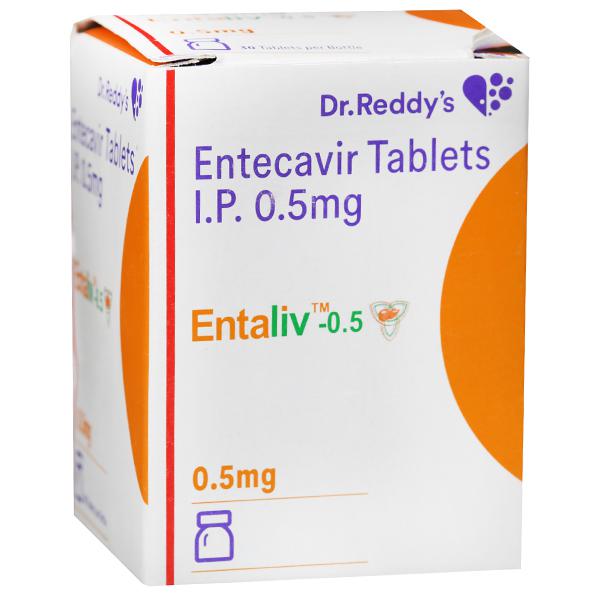A viral infection is caused due to the growth of a harmful virus inside the body. Viruses need a host to reproduce and thus need to infect the body of the host. Viruses introduce their genetic material into the host cells and multiply to make more virus particles. Antiviral drugs are medicines for viral infections. This article highlights medicines for viral infections
Commonly Prescribed Antiviral drugs

Acyclovir: It gets converted to acyclovir monophosphate by viral thymidine kinase and then undergoes a series of reactions by various enzymes to form acyclovir triphosphate. This form is more selective to the viral DNA polymerase than the cellular DNA and gets incorporated into the former resulting in viral DNA chain termination.

Atazanavir: It binds to the active site of HIV – 1 protease and forms an enzyme – inhibitor complex that inhibits virus-specific processing of viral Gag and Gag Pol polyproteins. These in turn prevent the formation of mature infection virions. This antiviral agent is inactive against HIV – 2 protease.

Ritonavir : It inhibits HIV protease and prevents the cleavage of the polyproteins by these enzymes. This in turn blocks the formation of mature virions in the initial stage itself. At low doses, this agent inhibits Cytochrome P450 – 3A4 and this in turn enhances the activity of the other protease inhibitors with which it is used in combination.

Dolutegravir : It binds to and inhibits HIV integrase to block the transfer of strand from the retroviral DNA to the host cell. This in turn inhibits viral replication and activity.

Lamivudine : It is a nucleoside reverse transcriptase inhibitor and competitively inhibits HIV reverse transcriptase enzyme and acts as a chain terminator of viral DNA synthesis. The drug is phosphorylated to form lamivudine metabolites that compete to get incorporated into the viral DNA to elicit the action. It also inhibits the reverse transcriptase of hepatitis – B virus.

Tenofovir : It gets phosphorylated to form the active form and then inhibits viral reverse transcriptase by competing with deoxyadenosine – 5’ – triphosphate. It also causes premature termination of DNA transcription and prevents viral replication.

Efavirenz : It binds to and inhibits reverse transcriptase in a non-competitive manner. This in turn inhibits the polymerization of viral DNA from the corresponding RNA and thereby prevents the synthesis of new virions.

Emtricitabine: It gets converted to the active triphosphate form intracellularly and competes with deoxycytidine– 5’ – triphosphate for incorporation into the viral DNA strand. This in turn causes DNA chain termination and inhibits viral DNA synthesis.

Entecavir : It gets activated invivo to form the triphosphate metabolite that competes with the deoxyguanosine triphosphate, a natural substrate, for incorporation into the viral DNA. It inhibits reverse transcriptase, viral RNA dependent HBV BNA polymerase and thereby stops viral replication.

Oseltamivir : It is a prodrug of oseltamivir carboxylate that selectively inhibits influenza virus neuramidinase enzymes. It inhibits viral entry into uninfected cells, reduces viral shedding and activity.

Sofosbuvir : The active phosphorylated form gets incorporated into the Hepatitis C virus RNA by the NS5B ( Non structural protein 5B) polymerase. This in turn inhibits viral RNA synthesis and induces chain termination.

Velpatasvir : It is a selective NS5A inhibitor and competes with RNA for binding to the domain 1 of Hepatitis C virus NS5A protein. This in turn inhibits viral replication.

Valacyclovir : It gets metabolized to form acyclovir initially and this in turn gets converted to the active triphosphate form by a series of reactions. The triphosphate form competitively inhibits and inactivates the viral DNA polymerase by getting incorporated into the growing viral DNA chain.
Now, let us review the popularly prescribed brands to treat viral infections (medicines for viral infections).
Popular Brands prescribed for Viral Infections
| Brand | Company | Composition | Pack |
|---|---|---|---|
| ACIVIR | CIPLA | ACICLOVIR |  |
| ZOVIRAX | GSK | ACICLOVIR |  |
| OCUVIR | FDC | ACICLOVIR |  |
| ATAZOR-R | EMCURE | ATAZANAVIR SULFATE + RITONAVIR |  |
| INSTGRA | EMCURE | DOLUTEGRAVIR SODIUM SALT |  |
| VIROPIL | EMCURE | DOLUTEGRAVIR SODIUM SALT + LAMIVUDINE + TENOFOVIR DISOPROXIL FUMARATE |  |
| VONAVIR | EMCURE | EFAVIRENZ + EMTRICITABINE + TENOFOVIR DISOPROXIL FUMARATE |  |
| VIRADAY | CIPLA | EFAVIRENZ + EMTRICITABINE + TENOFOVIR DISOPROXIL FUMARATE |  |
| VONADAY | EMCURE | EFAVIRENZ + LAMIVUDINE + TENOFOVIR DISOPROXIL FUMARATE |  |
| TENVIR-EM | CIPLA | EMTRICITABINE + TENOFOVIR DISOPROXIL FUMARATE |  |
| TAVIN-EM | EMCURE | EMTRICITABINE + TENOFOVIR DISOPROXIL FUMARATE |  |
| ENTAVIR | CIPLA | ENTECAVIR |  |
| ENTALIV | DRL | ENTECAVIR |  |
| ENTEHEP | ZYDUS CADILA | ENTECAVIR |  |
| ANTIFLU | CIPLA | OSELTAMIVIR PHOSPHATE |  |
| FLUVIR | HETERO HEALTHCARE | OSELTAMIVIR PHOSPHATE |  |
| SOVIHEP | ZYDUS CADILA | SOFOSBUVIR |  |
| MYHEP | MYLAN PHARMA | SOFOSBUVIR |  |
| RESOF | DRL | SOFOSBUVIR |  |
| MYHEP ALL | MYLAN PHARMA | SOFOSBUVIR + VELPATASVIR |  |
| VELPANAT | NATCO PHARMA | SOFOSBUVIR + VELPATASVIR |  |
| SOVIHEP V | ZYDUS CADILA | SOFOSBUVIR + VELPATASVIR |  |
| VELPACLEAR | ABBOTT | SOFOSBUVIR + VELPATASVIR |  |
| VELASOF | HETERO HEALTHCARE | SOFOSBUVIR + VELPATASVIR |  |
| HEPCVEL | CIPLA | SOFOSBUVIR + VELPATASVIR |  |
| HEPBEST | MYLAN PHARMA | TENOFOVIR ALAFENAMIDE FUMARATE |  |
| TENVIR | CIPLA | TENOFOVIR DISOPROXIL FUMARATE |  |
| VALCIVIR | CIPLA | VALACICLOVIR HYDROCHLORIDE |  |
References :
- 1.Antiviral drugs-1
- 2.Antiviral drugs-2
- 3.Ritonavir
- 4. http://www.antimicrobe.org/drugpopup/ritonavir.htm
- 5. Antiviral drugs-3
- 6. Antiviral drugs-4
- 7.Lamivudine
- 8.Tenofovir
- 9. Tenofovir_disoproxil
- 10.Efavirenz
- 11.Emtricitabine
- 12.Entecavir
- 13.Antiviral drugs-5
- 14.Sofosbuvir
- 15.Antiviral drugs-6
- 16.sofosbuvir-velpatasvir-treatment-of-hepatitis
- 17.Antiviral drugs-7
- 18.Valacyclovir


Pingback: Acyclovir- Indications, Dosage, Contraindications, ADRs - PharmaCampus
Pingback: Pharmaceutical Content Writing: How can I learn this skill? - PharmaCampus